by Brad Plumer / the Washington Post
We’ve heard a lot about the Keystone pipeline these past few years — which, if approved, would carry oil from the tar sands of Alberta down to refineries in the Gulf Coast. Supporters say the pipeline will improve U.S. energy security. Environmentalists say the tar sands will prove disastrous for global warming.
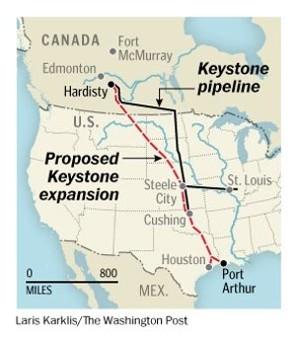 That debate can get a bit abstract at times. And so, to make things more concrete, my colleague Steven Mufson decided to take a road trip last summer down the length of the proposed Keystone route, from Alberta to Texas.
That debate can get a bit abstract at times. And so, to make things more concrete, my colleague Steven Mufson decided to take a road trip last summer down the length of the proposed Keystone route, from Alberta to Texas.
He’s written the whole trip up in an excellent new e-book “Keystone XL: Down The Line.” The book is a fairly quick read and really offers a fascinatingly detailed look at many of the issues raised by the pipeline. It’s highly recommended for anyone interested in energy and environmental topics.
Here are seven interesting things about the Keystone XL pipeline I came across in the book — though keep in mind there’s a lot more in there:
1) Extracting oil from tar sands is carbon-intensive, but Shell thinks it can be viable even with a carbon tax:
Shell does internal evaluations of project economic viability using a hypothetical carbon emissions price of $40 a ton for carbon dioxide, even though there is no carbon tax or cap-and-trade program imposing such a fee. But the $40 price is far above Europe’s carbon exchange, and the oil sands still pass financial muster, Abbott said.
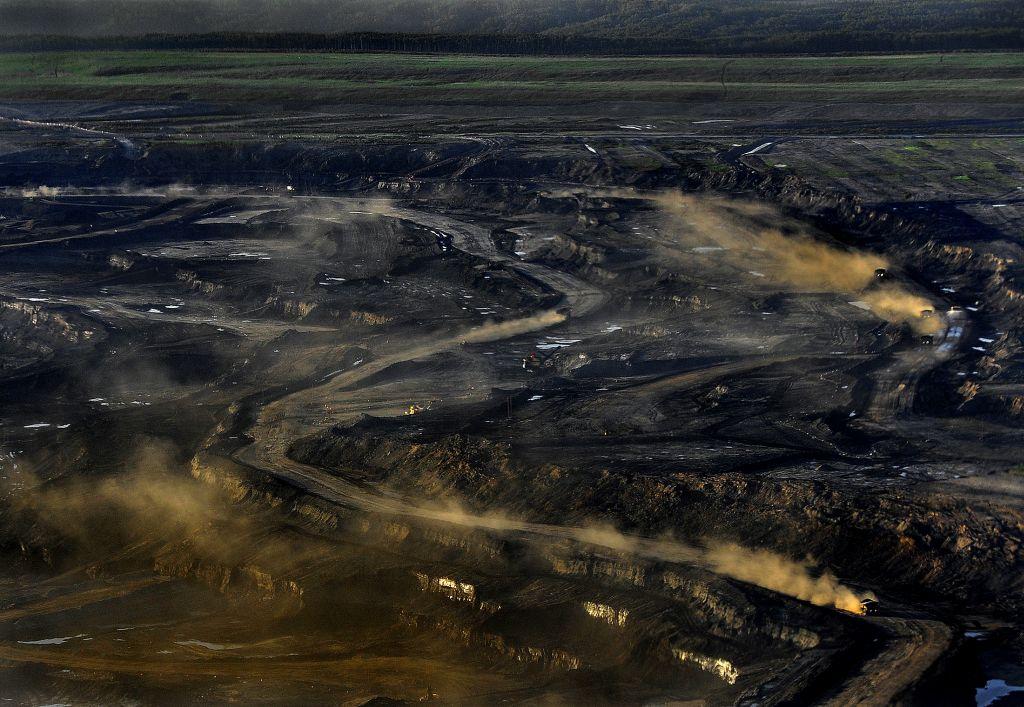 Dust rises off the Sycrude oils sands open pit mine in Alberta, Canada. (Michael S. Williamson/The Washington Post)
Dust rises off the Sycrude oils sands open pit mine in Alberta, Canada. (Michael S. Williamson/The Washington Post)
2) In Alberta, the process of mining tar sands for oil has produced huge “tailings” ponds that pose a danger to birds. Oil companies have pursued novel ways to scare away waterfowl while they develop new underground “in situ” drilling techniques that don’t produce such ponds:
As of 2010, the black tailings ponds covered an area equal to 68 square miles, according to Alberta government figures. That’s bigger than the District of Columbia, at 61 square miles.
Though the amount of leftover oil in the ponds is small, it floats to the surface, posing a menace to any bird foolish enough to splash down. In 2006, 1,600 ducks and other waterfowl died after landing on a tailings pond owned by one company, Syncrude. A week after the company was fined nearly $3 million for those deaths, 230 ducks were euthanized after landing on another pond. Shell uses radar to detect incoming birds. It triggers a signal to floating platforms with fake predator birds to sound fake predator calls, as well as fire cannons to frighten the real birds away.
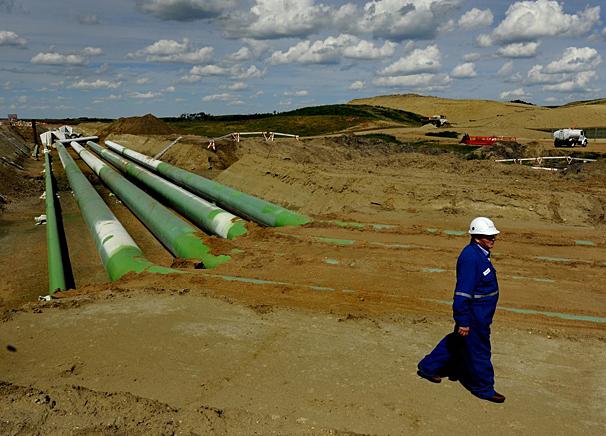 (Michael Williamson, The Washington Post)
(Michael Williamson, The Washington Post)
3) TransCanada has been buying up rights of way across the Great Plains in anticipation that the pipeline will be approved — and, when necessary, asking the courts to exercise eminent domain:
TransCanada’s initial terms [to landowners] offer modest payments to cover any risk of leaks, rupture, or interruptions of service as well as damage to crops… Landowners, by contrast, would be liable for any damage done to the pipeline, willful or not.
Recently, TransCanada has sweetened offers to landowners, especially those along the new Nebraska route, to try to ease access problems. But Harter said the mere threat of eminent domain persuaded many landowners to come to terms with the company without going to court — or running up legal fees.
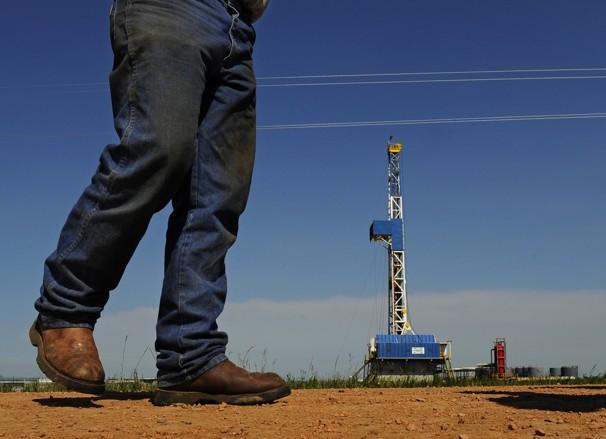 Rancher Donny Nelson doesn’t necessarily trust the oil companies who are drilling on his land. He has some well rigs on his property (background) but is cautious and not sure how much more he wants to let them use his land further. (Michael S. Williamson/The Washington Post)
Rancher Donny Nelson doesn’t necessarily trust the oil companies who are drilling on his land. He has some well rigs on his property (background) but is cautious and not sure how much more he wants to let them use his land further. (Michael S. Williamson/The Washington Post)
4) The oil industry in North Dakota is now growing so fast that companies are struggling to find workers. Even the local McDonald’s can barely keep up:
A billboard for Precision Drilling said the company was “looking for a few toughnecks” — a play on the term “roughneck,” for oil worker. Whiting Petroleum had 180 openings in the area. “You can’t find the warm trained bodies that you need. We are in full-time recruiting mode,” said Jack Ekstrom, Whiting’s vice president of government and corporate relations.
The McDonald’s in Dickinson is offering a $300 bonus to any worker who stayed three months. “Are you Mac enough?” its recruiting flier asked.
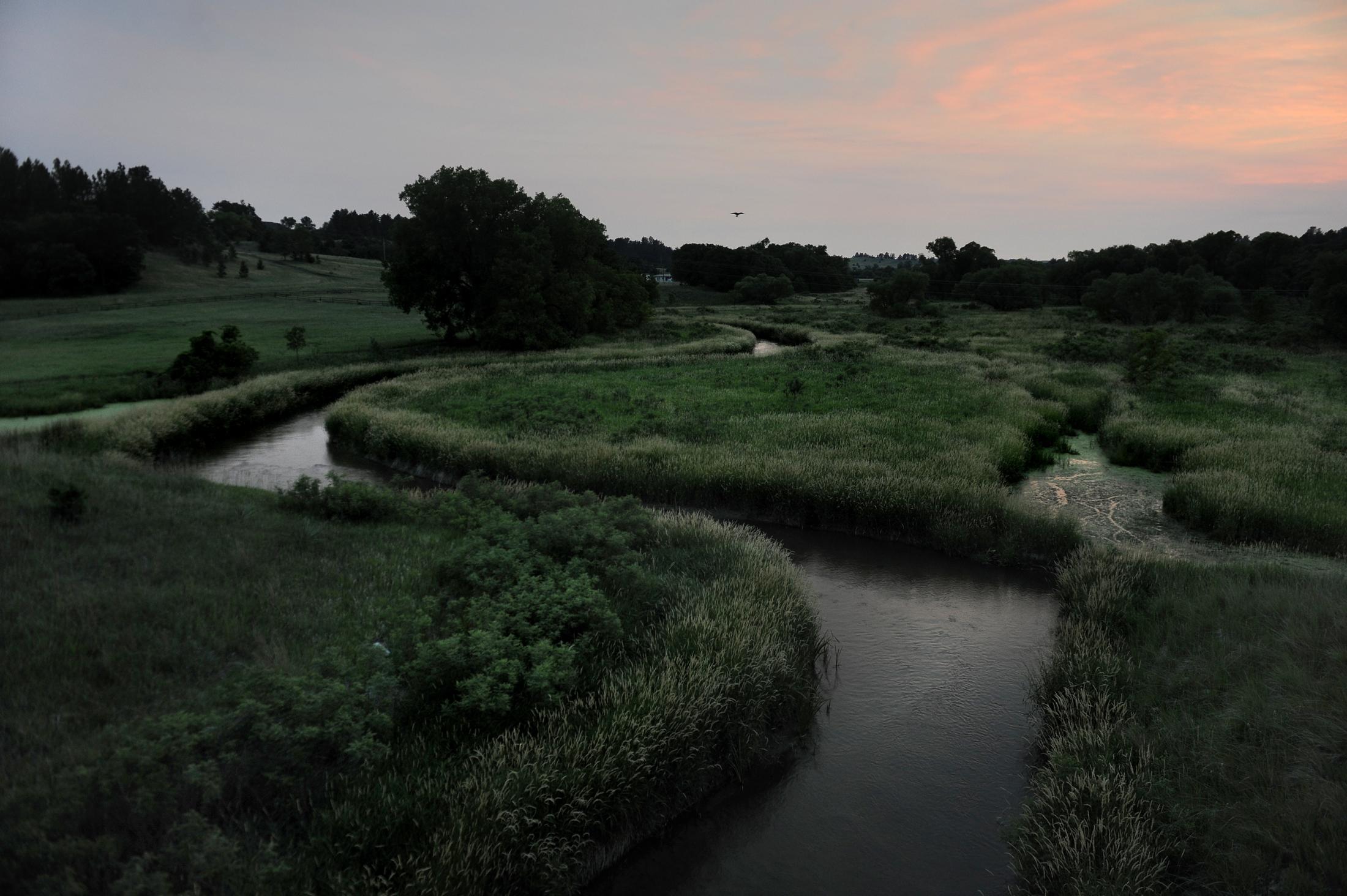 The Keystone XL pipeline at one point was going to run through the sensitive Sand Hills areas near Valentine, Neb. The pipeline was rerouted to the east, so it will not pass through this area at the Minnechaduza Creek. TransCanada has announced that it will change the Nebraska route again. (Michael A. Williamson/The Washington Post)
The Keystone XL pipeline at one point was going to run through the sensitive Sand Hills areas near Valentine, Neb. The pipeline was rerouted to the east, so it will not pass through this area at the Minnechaduza Creek. TransCanada has announced that it will change the Nebraska route again. (Michael A. Williamson/The Washington Post)
5) TransCanada is promising that it now has the technology to guard against pipeline leaks…
TransCanada has tried to ease anxieties about leaks. At its Calgary headquarters, the company has a control room we saw that monitors pipeline pressures throughout its network. There are 16,000 data points on the existing Keystone pipeline, completed last year, and they are refreshed every five seconds, the company said.
Quickly detecting a pressure drop that could indicate a leak is essential; the flow rate on the existing pipeline is about 410 barrels a minute, and the capacity of the new line would be about a third bigger. The company said that it can isolate a piece of pipeline and shut off the flow of oil in just 15 minutes.
 (JACOB SLATON/ Reuters ) – Emergency crews work to clean up an oil spill near Interstate 40 in Mayflower, Ark., March 31, 2013. An Exxon Mobil pipeline carrying Canadian crude oil was shut off after it ruptured on Friday causing an evacuation of 22 homes.
(JACOB SLATON/ Reuters ) – Emergency crews work to clean up an oil spill near Interstate 40 in Mayflower, Ark., March 31, 2013. An Exxon Mobil pipeline carrying Canadian crude oil was shut off after it ruptured on Friday causing an evacuation of 22 homes.
6) …But environmentalists say that tar-sands pipelines are overly leak prone:
But many environmentalists say that the pipeline poses special dangers: They say that ingredients of crude from oil sands make pipelines more prone to leaks. They argue that the diluted bitumen, or dilbit, from the oil sands can separate under pressure or high temperature and create explosive natural gas, heavy compounds, and corrosive acids.
Environmentalists also point to the Enbridge pipeline rupture and oil spill in the Kalamazoo River near Marshall, Mich. Unlike conventional crude oil, which floats in water, the bitumen in the oil sands crude sank to the riverbed, making it hard to recover. Higher levels of benzene in the pipeline mixture forced a temporary evacuation of the area.
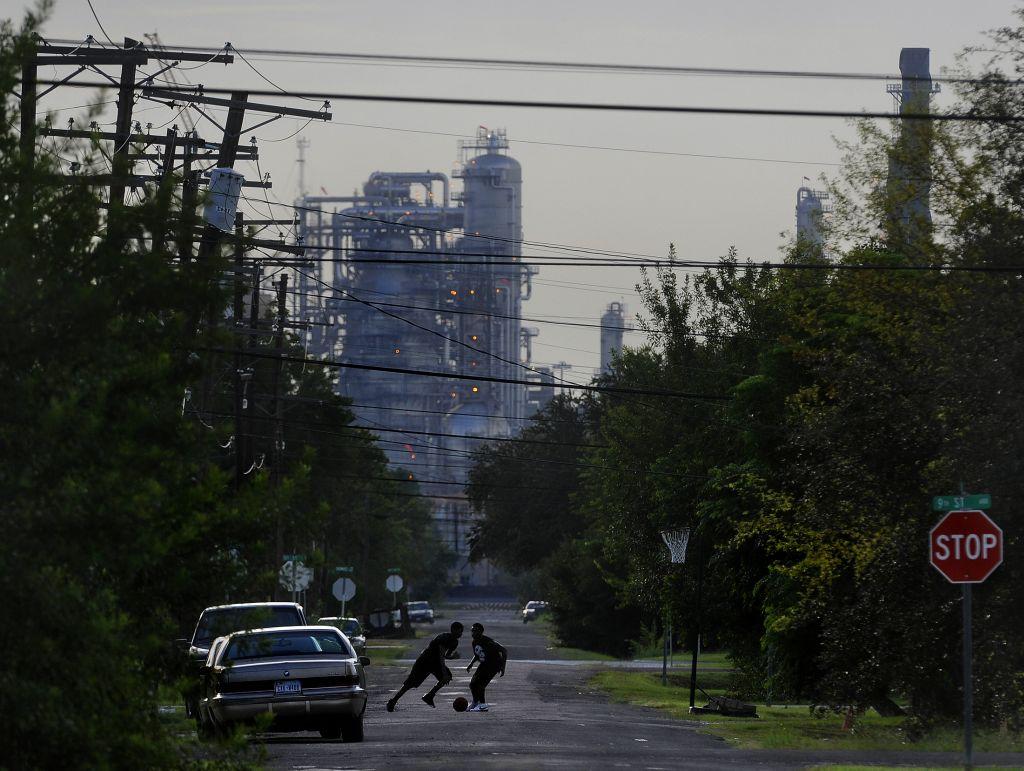 Port Arthur, Tex. is the end of the line for oil that would travel through the proposed Keystone XL Pipeline. The neighborhoods around the downtown area have few views that don’t include the oil facilities looming as a backdrop. (Michael S. Williamson/The Washington Post)
Port Arthur, Tex. is the end of the line for oil that would travel through the proposed Keystone XL Pipeline. The neighborhoods around the downtown area have few views that don’t include the oil facilities looming as a backdrop. (Michael S. Williamson/The Washington Post)
7) The oil in the Keystone Pipeline is destined for Port Arthur, Tex., which has seen a boom in refinery capacity — but without much benefit to the actual city:
Although investment is pouring into Port Arthur’s refineries, the city itself has reaped little benefit. The old downtown’s Proctor Street, once lined with stately hotels, office buildings, and fancy cars is virtually abandoned. (One exception: a bar called Club Sistahs, which has some live bands.)
The blocks near the refineries have small, rundown homes. People living below the poverty line make up a quarter of the population, according to the U.S. Census Bureau. Per capita income is just two-thirds of the Texas average. Fewer than one in 10 people over age 25 have a college degree.
There’s a lot more in the book, from the debate over how tar sands would affect global warming to the Nebraska Republican backlash against the pipeline to a mini-profile of Harold Hamm, one of the first oil men to recognize the potential oil boom in North Dakota. So check out the book here.


